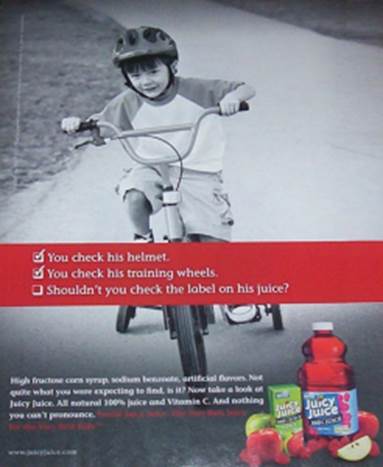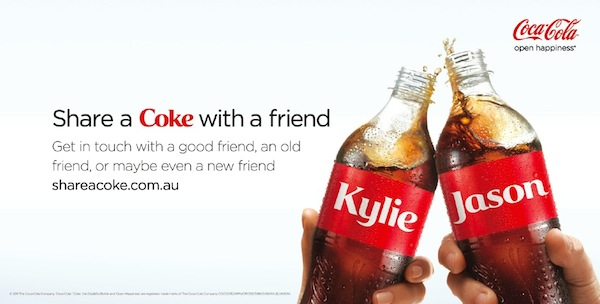Emotional Persuasion: How to Use It To Your Advantage When Selling
Envy, guilt, fear, greed, and happiness can all be used to influence your audience
by The Net Atlantic Marketing Team
Introduction
The most effective marketing campaigns are the ones that target the consumers’ emotions and feelings, known as emotional selling. Marketers focus on emotional responses by selling the lifestyle and feeling that is evoked when using the product, not just the features and benefits. This requires marketers to make genuine connections with their ideal customer profile to uncover their feelings, needs, and wants. Harvard Business School professor, Gerald Zaltman, says that 95% of purchasing decisions are subconscious meaning that emotions are the underlying drivers in decision-making. The most impactful and successful advertisement campaigns have utilized this sales strategy, from brands including Coca-Cola, L’Oréal, and Nike.
A lot of what motivates consumers is subconscious behavior. Some believe this approach can be manipulative or unethical, but there’s nothing manipulative about helping customers achieve a desired state of emotion. Products and services are designed to satisfy and fulfill customers’ wants and desires, and those desires always contain some emotional component. Emotional selling should not be perceived as a negative tactic, rather as a strategic means to connect with consumers and improve their relationship with the brand.
Here are five examples of how evoking different emotional responses can be used to sell and why they’re effective.
Envy
Envy is defined as the painful or resentful awareness of an advantage or possession enjoyed by another and the desire to possess the same thing. In terms of marketing, marketers take advantage of envy to create desires in consumers to motivate purchasing decisions, essentially making their products seem more desirable. This strategy is used widely among luxury brands, inspiring consumers to achieve personal goals – such as beauty, wealth, or status – and is a symbol of social aspiration.
Lincoln Motor Company, the luxury vehicle division of Ford Motor Company, released a commercial with well-known celebrity Matthew McConaughey. Celebrity endorsements are often seen with high-end brands to associate their brand with desirable traits. McConaughey can be defined as successful, charming, and sophisticated. By featuring him in their commercials, Lincoln aligns their brand with these attributes evoking envy among viewers who aspire and admire his lifestyle and success. Who isn’t a little bit envious of their favorite celebrity driving around in luixury vehicles?
Seeing McConaughey enjoying the benefits of a Lincoln can also trigger social comparisons, turning envy into a competition to have “the next best thing.” This is clearly demonstrated with the rivalry between Apple and Samsung in the Samsung commercial. Using comparative advertising to highlight the features and capabilities of the new Galaxy, positioned Samsung as the superior choice.
Evoking envy can be a strategic marketing approach when used properly and it begins with your unique value proposition. Develop your competitive advantage in the market and determine what desires you are creating and how you fulfill those desires – establishing a narrative that resonates with your audience’s aspirations.
Guilt
Guilt marketing targets the consumer’s sense of morality and responsibility. It encourages them to purchase a product or service to alleviate the guilt associated with a particular issue or personal behavior. To leverage emotional responses, guilt marketing needs to connect to audience by addressing feelings of compassion, responsibility, or social duty. People like to see themselves as part of the solution, not the problem.

For example, Juicy Juice offers a healthy alternative to high fructose corn syrup juices and evokes feelings of guilt in parents by emphasizing the importance of making nutritious choices for their children’s health. By asking the question, “Shouldn’t you check the label on his juice?” it subtly urges parents to consider the ingredients in their children’s juice, implying that choosing anything less than a healthy option might be harmful and neglectful. This tactic plays on parental responsibility and the desire to protect their children's well-being, compelling them to opt for Juicy Juice as a conscientious choice.
Juicy Juice effectively leveraged guilt marketing in their advertising campaign by understanding their targeted audience’s sense of parental responsibility and their emotional attachment to their children. To successful evoke feelings of guilt in your marketing, you need to know your consumers pain point and sell to it.
Use this tactic to show how your product or service can remove guilt from a person. Hit on common insecurities and show how they can make better choices with your product or service.
This tactic can also be used well with non-profit organizations to elicit donations or charity work. This ad shows how inexpensive and easy it is to help out an abused animal. It’s only 60 cents, and it will only take me a minute, so I need to do it, is what pretty much everyone thinks when they see ads like this.

Use guilt in your marketing by figuring out where your buyer persona’s heart strings can be tugged at. If it’s guilt for not spending enough time with family, or guilt for eating too much cake the night before, sell to that pain point.
Fear
Fear is an alarming and powerful emotion, making a person feel uneasy and defensive can cause involuntary responses. It’s a human characteristic that triggers us to take action to avoid the dangerous stimuli and is a strong motivator to a call to action. The most obvious way to appeal to fear is by helping people avoid real and likely dangers.The CDC employs this tactic in their campaigns against smoking, such as “Tips from Former Smokers,” which display graphic images of the severe long-term consequences. These images include a woman who underwent throat reconstruction, experiences hair loss, and suffered from tooth decay. This approach aims to shock and deter both current smokers and potential users by vividly illustrating the harmful and often irreversible effects of tobacco use, serving as a warning to put down the dangerous habit.
Similarly, the “Click it or Ticket” campaign from the National Highway Traffic Safety Administration uses fear to warn passengers of the potentially fatal consequence of neglecting to wear a seatbelt. The campaign typically includes advertisements, posters, and public service announcements that emphasize the dangers of not buckling up. Often featuring scenarios of individuals in car accidents without following the seatbelt laws, end up suffering severe injuries or fatalities, aiming to promote behaviors that reduce safety risks.
While many marketers may think fear marketing is more anxiety inducing and a risky approach, it can effectively prompt immediately action and behavioral changes when strategically used. To do this, use personally relevant threats to your audience and offer your solution as an easy and effective preventive measure. Positioning your product as the only logical solution boosts your customer’s efficacy and reassures them security and safety towards a better life.
Greed
Even though we may not want to admit it, we always want more – especially if the benefits exceed the costs. Think of it in terms of Black Friday; why do you love clearance sales or the satisfaction of finding the best deal? It taps into our innate behaviors for material and social desire – if you think you aren’t greedy, we are all at some degree selfish and pursue things for our own benefit!
Pro marketers take advantage of your natural behaviors by offering “package” price for a group of products, creating scarcity through limited time offers or exclusive releases, or enticing consumers with “free” products. The children’s toy industry executes this approach fantastically by targeting malleable young children and their endless desire for everything. In this Shopkins commercial, it displays multiple toy sets rather than just the one, sparking children’s interest in collecting them all.
Utilizing greed to receive an emotional response is an easier approach than most emotions because we live in a capitalist society built on consumption and driven by the idea of always wanting more. To lure your audience with greed, you simply need to convince them that they need your product and paint the illusion that the benefits far exceed the costs.
Happiness
Happiness makes people feel good and can spark feelings of excitement and optimism. Who doesn’t want to feel a sense of pleasure and enjoyment? Many brands tap into these emotions by showcasing moments of celebration, joy, and fulfillment in their advertisements.

Coca-Cola used this strategy in their “Share a Coke with a Friend” campaign, producing bottles with thousands of different names on its packaging to encourage people to find and share a Coke with friends and family. This created a sense of belonging and connection among their customers, contributing to a meaningful and enjoyable experience. Not only did this campaign make their customers happy, but shareholders too as 1.25 million more teens tried Coke and sales rose by a phenomenal 11% in the U.S, according to Marketing Mag.
While happiness can be a sip of a Coke, to others its contributing to a good cause. People hold themselves to a social responsibility standard and strive to make a meaningful impact on society. According to a 2017 Cone Communication Study, more than nine-in-ten millennials would switch brands to one associated with a good cause.
Ben and Jerry’s employed this tactic in 2020 during the peak of the Black Lives Matter Movement and released a limited-edition flavor called Justice ReMix’d. A percentage of each sale went to the Advancement Project, an organization that advocates for social justice.

To make your customers happy, identify the ways enjoyment and excitement is linked to your brand. Does your brand evoke positive emotions and create lasting memories? Or does your brand have a strong alignment to a certain cause? Knowing how your brand makes your audience feel and react, you can leverage different emotional responses.
Marketing campaigns have different objectives and audiences, and understanding your ideal customer will help you leverage different emotional responses to communicate your message most effectively. Emotional marketing is not exploiting your customers or manipulating them, its purpose is to create genuine connections and address their desires and values. It is a strategic approach to develop strong relationships with your target audience and enhancing their overall experience with your brand.
Conclusion
The bottom line is - focus on your audience and how they are going to feel, instead of focusing on your product or offering. Emotions rule our human decision-making. If you want to appeal to your audience, you’ll need to find ways to reach the part of their brain that relies on emotion. While we only focused on five different emotions, there are dozens of other emotions that you can enlist to persuade your audience.
Resources
How to Use Color Psychology in Marketing: https://www.helpscout.com/blog/psychology-of-color/
How to Create Detailed Buyer Personas For Your Business: https://blog.hubspot.com/marketing/buyer-persona-research
What Consumers Want from Brands in a Divided Society: https://sproutsocial.com/insights/data/social-media-connection/


